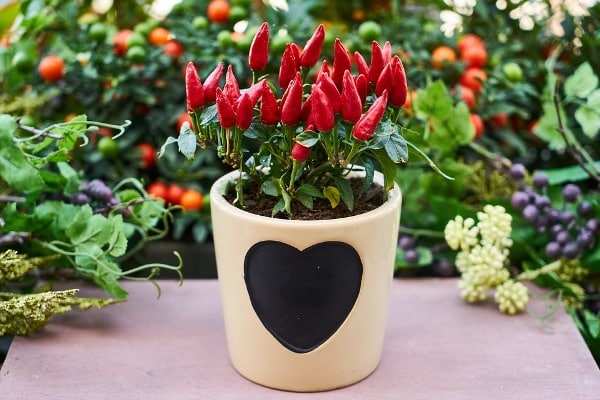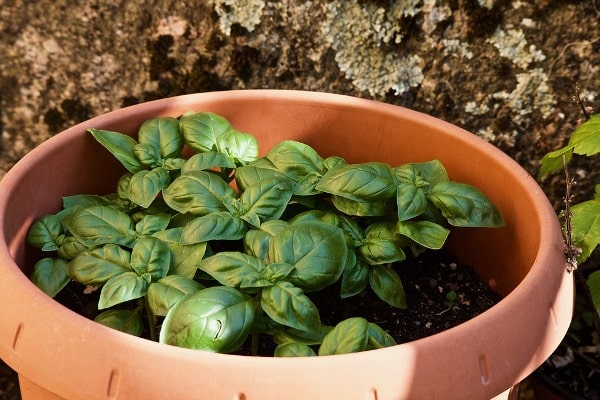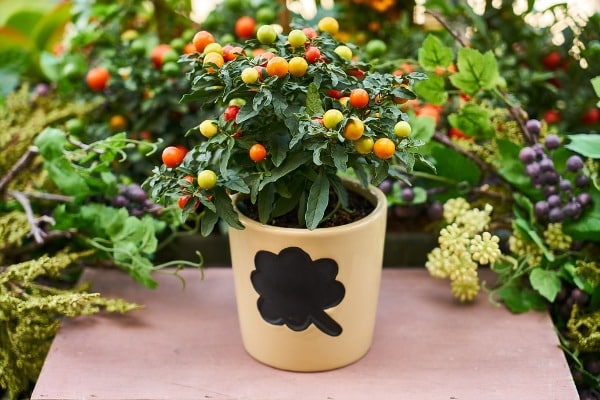Container Vegetable Gardening:
Today, let us talk about Container Vegetable Gardening Ideas, Tips, and Techniques.
If the space in your garden is limited, then container gardening helps you to grow nutritious vegetables with the help of containers. For a container garden which is productive, any place like a balcony, patio, doorstep would be sufficient. With container gardening, issues like soil erosion, diseases in the soil or any kind of nematodes can be completely avoided.
It is important to raise the vegetables, which occupy less space such as beets, lettuce, carrots, or any other crops which give fruits in a period of time such as pepper, tomatoes, etc. The varieties which are miniature will get matured and give the fruit in an early stage, but most of them will not give any sort of production and even if they produce, they do not reach the standard quality.
The quantity of sunlight, which is received by the spot in which the container garden is located decides the variety of crops which have to be grown. In partial shade, root and leaf crops can be grown. The vegetables, which are produced only for the sake of their fruits will require minimum direct sunlight of five hours. It is better if they are exposed to sunlight for ten hours. The light which is available can be improved to some extent by using reflective materials around the plant like aluminum foils, surfaces which are painted white etc.
Container gardening also looks attractive. The balcony or patio area will be brightened with the addition of containers which contain red tomatoes or colorful herbs. A shady place which is cill can be created with the plant boxes.

Selection of Containers for growing Vegetables:
For the gardening to be done, you can use many types of containers. The containers which are made of clay, plastic, wood or metal can be used and are also suitable. For growing vegetable plants, the containers must be
- Big enough so that they can support the plants when they grow up completely.
- Able to hold the soil so that spilling will not occur.
- Able to hold the microscopic particles which are tiny.
- Having a drainage system which is adequate.
- Not holding any products which are poisonous to people or plants.
It is always better to use flower pots, barrels, baskets which are made of plastic with holes punched in it for the purpose of drainage. If the planting box or the container is made of wood, you should use the redwood which is resistant to rot.
Few gardeners will build vertical planters with wood latticework which is lined in plastic and is filled with a medium which is lightweight. To aid the watering, perforated water pipes which have a diameter of 2 inches can be useful and it completely depends on the size of the vertical planter.
Make sure that the bottom of the container has holes irrespective of the type of container. This would help for the purpose of drainage which helps the roots of the plant not to withstand water which may rot the roots. Most of the plants require containers which have a minimum depth of 6 inches for the rooting to be adequate.
The use of items which are distracted or the building of the patio planters which are attractive is an aspect which the gardener enjoys. For easy movement of containers and for their care, casters can be used. This would be very useful in apartments so that the containers can be moved from heavy sunlight and bad weather conditions.
Read: Organic Vegetable Gardening Ideas, Tips, Care, Design.
Soil Medium for Container Vegetable Gardening:

A potting mix which is fairly light in weight can be used for container vegetable gardening. The soil taken from the garden directly cannot be used for the container gardening purpose as it would be very heavy unless the garden has the soil which is sandy. Clay soil would be worse because of the too much of the moisture it holds which results in providing less air for the roots and takes away the air from the sides of the pot when it is dry.
The medium of the container should be porous. This is because there is a requirement of both air and water for the roots. The potting soil, which is packaged will be available at the local gardens and will be having less weight. This makes it a good medium for containers.
The mixes which are soilless such as mix which is peat-lite will be very light for the container gardening as they do not give enough support to the roots of the plant. The container also should not be very light in weight, as there would be a chance for a strong wind to blow the plants which leads to big damage. The mixtures which are soilless are sterile and they contain very fewer nutrients Even if you add major fertilizers, there would be no trace elements for a decent growth of the plants. It is better to add potting soil when you prefer to use a peat-based mix.
For a container which is large, the cost of the soilless mixes will be slightly higher. Try to mix one section with peat moss, one section with potting soil and another section with perlite and a slow-release fertilizer. You may also need lime to adjust the pH level at 6.5. It is better if you test the soil to determine the requirement of nutrients and pH levels just as you do for a garden which is large.
Planting in Containers:
Always choose container crops for planting if you are working on a regular garden. For this, you need to fill a container which is clean up to one and a half inch of the top with a soil mixture which is slightly damp. If peat moss is added in the mix, it will absorb water and it will get mixed completely if it is soaked in water before adding it in the mix which is present in the container. Now start sowing the seeds as per the instructions on the packaging of the seeds. In each container, put a label which has the name of the plant, the date on which it is planted. After the plantation is done, soak the soil in the water in a gentle manner. This should be done gently so that there would be no displacement of seeds and they will not wash out. The seedlings which are thin will have the spacing in a proper way when the plants have two to three leaves. If there is a need for support in the form of cages, stakes, etc., then they should be provided when the plants are very small so that there would not be any damage to roots later.

Watering in Container Vegetable Gardening:
Watering the plants in the container needs particular attention. As the volume of the soil will be small, there is a chance that the containers get dry quickly, mainly on a patio made of concrete and is placed in full sun.
It is required to water the plants two times on a daily basis. Water should be applied until it goes out of the drainage holes. On the balcony which is located upstairs, there would be problems for the neighbors who are staying in the downstairs. So you need to take required provisions for the drainage. You need to purchase large trays which are filled with marble chips. Also, make sure that the soil is not soggy and make sure that the water is not standing on top of it.
In low temperatures, the container plants will have the problem of rotting of roots if watered too much. The pots, which are made of clay and other containers which are porous will provide additional evaporation which results to the watering more often. The pots which are small in size also dry out frequently. If you observe that the soil is getting dried more often, form a group of containers by bringing them together which helps to create a canopy which shades the soil and keeps it cool.
On a patio which is hot, you can keep the containers on pallets which allow the movement of air below the pots and also avoid direct contact with the cement. You need to check the containers once in a day when cool, and twice when the weather is hot or windy. You need to touch the soil and feel it check if it is damp. Mulching will help to reduce the requirement of water for the containers. If you are not in the house, make sure you are arranging an automatic drip emitter irrigation system.
Fertilizing in Container Vegetable Gardening:
If you are using a soil mix which is having a fertilizer, then your container plants are provided with nutrients which can make them healthy for at least eight weeks. If you want your plants to grow longer than this, then add a fertilizer which is soluble water at a rate which is recommended. This adding of fertilizer should be done for every two weeks. Fish emulsion or compost can also be added occasionally so that they add trace elements to the soil. Make sure that you are not adding the fertilizer crossing the recommended level as this leads to burning of fertilizer and causes death to the plants. The plants grown in containers will not have a large content of soil to save them from over-fertilizing.
The care which has to be taken in Container Vegetable Gardening:
The pests and diseases are common in any garden and container vegetable garden is not an exception. An inspection should be done on the plants on a regular basis to check for the foliage feeders and fruit-feeders. This inspection will also help you to check if the plants are affected by any sort of disease. The plants should be protected from the high heat, which is caused by the reflection of light from the road. If you observe such scenarios, move the plants to a location which has a shelter. This can be done in severe rains, windstorms etc.
Read: Bonsai Tree Care, Tips, Ideas.
Suggestions on Containers for Vegetable Growing:
| Type of vegetables | The minimum size of the container | Details |
| Artichoke | 38” width x 26” depth | Need to plant one plant per container. It is better to use large barrels. These do not produce until 24 months. If the climate is cool, they may not survive in the container. |
| Bean Bush | 2.5 gallons | Need to plant one plant per container or you need to choose large containers and plant thin plants with a distance of 4 inches. It would be better to grow in the baskets which are plastic lined and have a good drainage system. |
| Amaranth red leaf | 12.5” diameter | Need to plant one plant per container and it can survive in partial shade. |
| Beets | 2 gallons at a depth of 6”-12 | These should be planted at a distance of 3” apart and it can survive in partial shade. |
| Broccoli | 5 to 6 gallons | Need to plant one plant per container and it can survive in partial shade. |
| Brussels Sprouts | 2 to 3 gallons | Need to plant one plant per container |
| Broccoli Raab | 2 to 3 gallons | Should be planted 4” to 6” apart. Monitoring should be done on a daily basis. Flowering occurs rapidly in containers and they can survive in partial shade. |
| Bitter Melon / Karela / Bitter Gourd | 4 to 5 gallons | Should be planted 6”-8” apart. |
| Bean Fava | 4 to 5 gallons | 3 to 5 can be planted in a container. Support of trellis may be required if they are not kept in full sun. |
| Bok Choy | 2 gallons | Should be planted 6” apart. |
| Cabbage | 5 to 6 gallons | Need to plant one plant per container |
| Carrots | 2 gallons with a depth of 6”-12 deep | The roots which are shallow will work well. Need to be planted 2” apart. If trying to produce carrots which are longer, choose the container which is double the size of the roots. |
| Chinese cabbage | 2 to 3 gallons | Need to plant one plant per container |
| Cauliflower | 5 to 6 gallons | Need to plant one plant per container and it can survive in partial shade. |
| Collards | The depth of 12” | It can survive in partial shade. |
| Celery / Cilantro / Coriander | 5 gallons | Should be planted 6” apart. |
| Corn/Maize | 3’ width x 1’ depth | 3 plants should be planted in a container for pollination to occur. This is not recommended for container gardening as the plants would be tall and they feed heavily, which makes it difficult to get produce from them |
| Edamame | 3 gallons | Need to plant one plant per container |
| Cucumber/Kaddu/Dosakaya | 5 gallons | Need to plant one plant per container. Do not let them dry as the fruits get bitter. The Spacemaster is the variety which can be preferred for plantation. |
| Eggplant /Brinjal | 5 to 6 gallons | Need to plant one plant per container |
| Escarole | 8” width x 10″ depth | Need to plant one plant per container and it can survive in partial shade. |
| Endive | 8” width x 10″ depth | Need to plant one plant per container and it can survive in partial shade. |
| Gourds | 5 to 6 gallons | Need to plant one plant per container |
| Kohlrabi | 5 to 6 gallons | Can plant up to 3 plants per container |
| Leek | The depth of 10”-12” | Need to be planted 4” apart and the leeks which are crowded will remain small. |
| Kale | 8” width x 8” depth | Easy for the maintenance in containers and it can survive in partial shade. |
| Lettuce | 8” width x 10″ depth | These types of leaves are suitable for containers. Seeds can be sown directly and they can survive in partial shade. |
| Mache | Any size can be preferred | It can survive in partial shade. |
| Mesclun | 2 gallons | It looks good in containers and can survive in partial shade. |
| Muskmelon | 6 to 10 gallons | Need to plant one plant per container |
| Microgreens | Any size can be preferred | It can survive in partial shade. |
| Melons | 6 to 10 gallons | Need to plant one plant per container |
| Mustard leaves | The depth of 8”-12” | Need to be planted at a distance of 6” and they can survive in partial shade. |
| Onion Bunching | The depth of 10”-12” | Need to be planted at 2” distance and they are able to survive in partial shade. |
| Okra / Ladyfinger / Bhendi | 6 to 10 gallons | Need to plant one plant per container |
| Peas | 12” width x 12” depth
|
Harvesting occurs 14 days earlier than in the ground. |
| Pepper / Chilli | 5 to 6 gallons | Need to plant one plant per container |
| Wheatgrass | Any size can be preferred | It can survive in partial shade. |
| Turnip | 5 to 6 gallons | 3-4 plants can be grown in a container |
| Tomato, Dwarf (Cherry) | 2-3 gallon
|
One plant can be grown in a container. It may require support or can be grown in hanging baskets |
| Tomato, Pole (Indeterminate) | 5 to 6 gallons | One plant can be grown in a container and cages can be used for support. |
| Tomato, Bush (Determinate) | 5 to 6 gallons | Need to plant one plant per container |
| Tomatillo | 5 to 6 gallons | Need to plant one plant per container |
| Radishes | 2-3 gallon | Need to be planted 1” apart and it can survive in partial shade. |
| Spinach / Palak | 1 to 2 gallons | Up to 3 plants can be planted in a container and can survive in partial shade. |
| Summer Squash Vegetables | 5 to 6 gallon | Need to plant one plant per container |
| Swiss Chard 5 gallon
|
5 to 6 gallon | 3 to 5 plants can be planted in a container and can survive partial shade. |
| Winter Squash Vegetable | 5 to 6 gallon | Need to plant one plant per container which is having a size of whiskey barrel. |
| Radicchio | 8” width x 10″ depth | Need to plant one plant per container |
Post Farming Requirements: Kisan Classifieds.
Hi, I would like to knle whether Blueberry can be grown in Kerala, where the climate is above 20 degrees throughout year, with 6 months rain. Thank you.
Blueberry will not like the rain, so grow under plastic tunnels. Try the variety Biloxi and keep it evergreen.